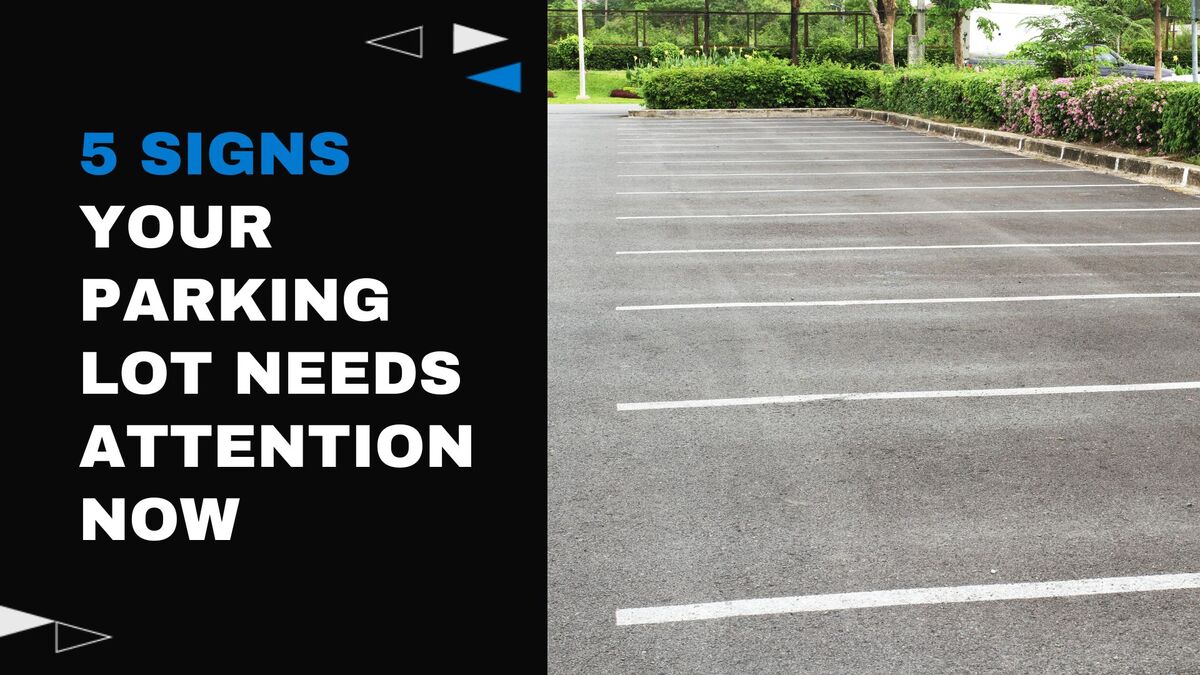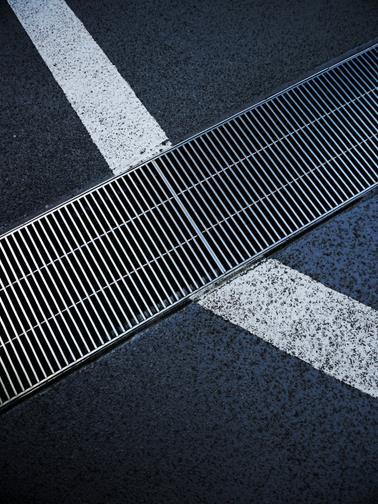5 Signs Your Parking Lot Needs Attention Now

Have you started noticing cracks, fading lines, or standing water in your lot but aren’t sure if it’s time to do something about it? It’s easy to brush off surface wear as cosmetic, especially when things seem to be holding up overall. But those small issues are often early warnings.
What you see on the surface can signal much larger problems forming underneath, problems that lead to safety concerns, higher repair costs, or liability risks if ignored. From uneven patches to drainage problems, your lot may be telling you it needs attention long before major damage sets in.
The challenge is knowing which signs matter and which ones you can wait for. That’s where having a clear understanding of what to watch for can help you act before things get worse and protect both your property and your budget.
In this article, we’ll walk through five clear signs your parking lot is due for maintenance and explain why catching these issues early can save time, money, and hassle down the road.
What Early Damage Can Tell You About Your Lot
Small issues in your parking lot often signal deeper wear and tear beneath the surface. Addressing these signs early can help you avoid major repairs, protect visitors, and keep your property looking professional. Here are five clear indicators that your pavement may need immediate attention.
.png)
1. Cracks Are Spreading Across the Surface
Cracking is one of the earliest warning signs that your pavement is under stress. While a few hairline fractures may seem harmless, spreading cracks often point to more serious issues forming below the surface.
What to Look For
- Hairline cracks that are widening or multiplying
- “Alligator cracking” with scale-like patterns
- Cracks forming along joints, curbs, or traffic lanes
What It Could Lead To
When cracks are left untreated, moisture can seep into the base layer and weaken the structure. This makes the pavement more vulnerable to freeze-thaw damage and speeds up deterioration. Eventually, the cost of sealing cracks becomes the cost of full resurfacing.
.jpg)
2. Potholes Are Forming or Worsening
Picture If cracks are ignored long enough, they can evolve into potholes—one of the most obvious signs your lot needs attention. Even small potholes can lead to big issues quickly.
What to Look For
- Circular holes with crumbling or jagged edges
- Displaced gravel or asphalt debris nearby
- Vehicles jolting when driving over damaged spots
What It Could Lead To
Potholes pose a direct threat to vehicle safety and can cause trips or falls for pedestrians. They also raise liability concerns and, if left untreated, expose the sub-base to even more damage, potentially requiring full-depth repairs.
.jpg)
3. Faded or Missing Striping and Markings
Pavement markings don’t just provide structure—they contribute to safety and accessibility. If they’re fading, your lot may be less functional and no longer up to code.
What to Look For
- Parking stall lines that are difficult to see
- Missing arrows, crosswalks, or ADA indicators
- Dull or patchy paint that blends with asphalt
What It Could Lead To
Faded striping can confuse drivers and disrupt traffic flow. It may also result in ADA non-compliance or fire code violations, both of which come with serious consequences. Beyond function, missing or dull markings reduce the visual appeal of your property.

4. Drainage Problems After Rain
Standing water after a storm is more than a nuisance—it can be a sign of drainage failure that leads to long-term damage. Proper water management is key to extending pavement life.
What to Look For
- Pooling water that doesn’t drain within 24 to 48 hours
- Erosion around drains, curbs, or walkways
- Water collecting near buildings or entrances
What It Could Lead To
If water can’t drain properly, it begins to break down the pavement surface and the base layer underneath. Over time, this leads to structural instability and an increased risk of slip or ice hazards, especially in colder seasons.
.png)
5. Uneven or Warped Pavement Surface
A surface that looks wavy, warped, or soft under pressure could mean the foundation is starting to fail. These irregularities often develop slowly but become serious when ignored.
What to Look For
- Low spots, raised areas, or waves in the asphalt
- Pavement that shifts or flexes under pressure
- Sudden dips along heavily used areas
What It Could Lead To
Uneven pavement not only creates tripping hazards; it also signals poor drainage and underlying base issues. These signs typically point to a need for more extensive repair—or even partial reconstruction—if caught too late.
Take the Next Step with Pinnacle Paving
Your parking lot sends a message every day, and early damage is rarely just cosmetic. Spotting the warning signs now can help you avoid costly repairs, reduce risk, and maintain a clean, professional appearance.
Whether you’re dealing with cracks, standing water, or uneven surfaces, acting early helps extend the life of your pavement and saves money over time.
Pinnacle Paving offers expert assessments and maintenance planning to keep your lot safe, compliant, and looking at its best. Schedule a consultation today to get started.

